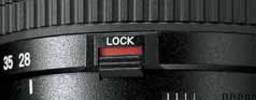Glossary
A
Aberrations
In photography an aberration is understood to be an image defect resulting from the divergence between the actual object picture and the ideal optical picture.
Aberrations include:
- Chromatic Aberration (the variation of a lens’s refractive index with wavelength)
- Astigmatism
- Flare
- Spherical Aberration
- Coma
- Field curvature
- Distortion
- Vignetting
Analogue
Analogue photography refers to conventional photography based on photosensitive films rather than sensors as in digital photography.
In contrast to conventional photography, digital photography uses electronic photosensitive sensors. These store an image in the form of an electric charge which is subsequently processed by means of a computer processor.
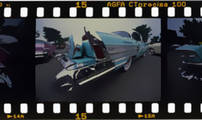
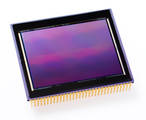
Modern CMOS and CCD Sensors
Angle of View
The angle of view describes the angle with which lenses capture an image with sufficiently low image defects.
In the diagram below (diagram 01) the angle of view is α.
For the angle α/2, tan α/2 = d/f d = focal length for the corner f = focal length
Example: If the focal length is equal to the format diagonal, then tan α = 0.5 and therefore the angle is 53°. This is a standard lens for the respective format.
Lenses can be roughly sorted into the following categories:
- Telephoto lenses α < 20°
- Long focal length 20° < α < 40°
- Normal lens 40° < α < 55°
- Wide-angle lens α > 55°
The evaluation of a lens can only occur when taking into account the format. For example, a normal lens for a certain format can also be used as a long focal length lens for a smaller format. This is particularly relevant in digital photography, because here sensors are used which are smaller than the 35 mm format. Thus, for example, the angle of view of a focal length of 300 mm with 24 x 36 mm negative film corresponds to an angle of view of 480 mm with a sensor of the size 15.2 x 22.7 mm!
The equivalent focal length for 35 mm would be approximately 1.6x longer, because the diagonal format is also approximately 1.6x longer. It seems as though the focal length is longer, but in reality merely the angle of view with small digital (APS-C) sensors becomes smaller.
The following focal length comparison was shot using a 28 mm focal length setting and from the same position. The first picture was taken with a full format sensor and the second with an APS-C sized sensor. The angle of view of the image shot with the APS-C sensor corresponds to a focal length of approximately 50 mm when converted to full format (although the focal length has physically remained constant).

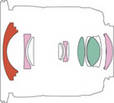



Anomalous Dispersion
Anomalous Dispersion glass is a special optical glass that delivers an abnormally large partial dispersion ratio (amount of dispersion at a given wavelength range within visible light) relative to a specific wavelength zone. By combining AD glass elements with elements made of normal glass with different dispersion characteristics, dispersion factors of a specific wavelength can be controlled, resulting in effective compensation of on-axis chromatic aberration on telephoto lenses, or lateral chromatic aberration often associated with wide-angle lenses of conventional optical configuration.
The difference in partial dispersion factors between normaloptical glass and AD glass elements (schematic diagram).
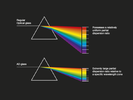
Aperture
The aperture (derived from the Latin word aperire meaning “open”) is a device which determines the width of the path for incoming light. The opening is most often adjusted with the help of overlapping diaphragm blades which are aligned in a circular shape. The more these blades are moved into one another, the narrower the resulting light path and the less light can enter the system and vice-versa.
The aperture controls the level of light and together with the exposure time the exposure of the film or imaging sensor is regulated. Apart from the exposure time and the viewfinder the aperture is an important technical means of photographic creativity because it influences the depth of field.
The aperture is expressed as a number without dimension derived by the relation between focal length and the width of the lens opening (more exact: the focal length divided by the diameter of the entrance pupil). The luminosity of the lens corresponds to the smallest f number, so of the biggest relative opening. The f number of mechanical cameras is adjusted on the lens ring, as opposed to electronic cameras where the adjustment is made per control elements on the camera body.
APS-C Format
APS-C was originally a film format of the size 25.1 x 16.7 mm (the crop format of the original negative format APS). Nowadays it is often given as a dimension format for image sensors of digital cameras, because these have a similar scale. Tamron has a series of lenses designed exclusively for this format called Di II.
The green field in the following picture (picture 01) shows the size of an APS-C sensor in comparison to a 35 mm conventional picture film (full-format sensors have the same size as 35 mm). The white circle marks the image circle of Tamron Di II lenses.
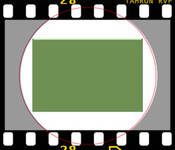
ASL
ASL lenses use one or more aspherical lenses.
Aspherical
As a rule, conventional lens elements have a constant radius (spherical), i.e., one can imagine that they are cut from a ball (sphere). This simple lens form, however, has disadvantages in terms of image defects. Thanks to innovative production technologies the trend is increasingly going over to the use of aspherical lenses. These lenses have a surface which deviates from the ball form. Especially the correction of spherical aberration and coma can be strongly improved with these asphericals. Moreover, the distortion is compensated by means of aspherical lenses.
The aspherical is manufactured by compounding a special plastic on the glass surface of the element. Tamron has perfected this cutting-edge technology for serial production and has integrated aspherical elements in a number of lenses, particularly high-power-zooms.
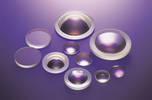


Astigmatism
Astigmatism is a form of aberration in photography. The term is derived from Greek where “a” means without and “stigma” means spot. When incident beams of light fall in at an angle and should meet at a point on the image plane but are distorted to (elliptical) discs.
The reason lies in the different focal lengths between the so-called meridional and the sagittal ray bundle.
Astigmatism is minimized in Tamron lenses through the use of aspherical lens elements and the skillful arrangement and combination of glass elements and their deflection properties as well as an optimized aperture.
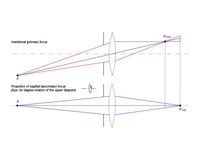
Available Light
Available Light refers to photography without any additional lighting i.e., an electronic flash despite unfavorable lighting conditions (e.g., at dusk or indoors). Instead, the camera sensitivity is increased, and the shutter speed is decreased, or lenses with image stabilizer are used (i.e., Tamron VC lenses).
As shown in the two pictures below, the atmosphere of an image can change considerably or can even be destroyed completely if artificial lighting is used.
Picture 01 was photographed with a flash, and Picture 02 without.
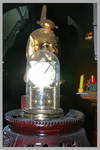
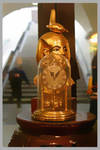
BBAR (Broad Band Anti Reflection) Coating
BBAR (Broad Band Anti Reflection) G2 Coating
Tamron uses advanced multi-coating techniques to suppress internal reflections that cause ‘ghosting’ (secondary images) and ‘flare’ (low contrast, washed out images). As soon as light hits an untreated glass surface, a part of it is reflected. The average reflecting degree on untreated glass surfaces amounts to 5 % – 6 %. This leads “to ghost images” and to loss of luminosity and contrast.
Tamron developed this coating technology to suppress these reflections, and to achieve the best possible color balance. The coating is applied to all Tamron lenses. An improved BBAR coating allows for even better light transmission with long, as well as with short wavelengths.
The decrease in reflection is reached via interference. The technology used here, is based on the fact that reflected light waves with the same amplitude extinguish themselves with an optical path difference of λ/2.
Consequently, nanometer layers of magnesium fluoride are applied on the glass surface from whose interfaces the light waves are reflected.
If a suitable layer thickness is chosen, the reflected waves will extinguish themselves the reflecting energy it is converted into transmission energy, so that the reflected light wave is transmitted instead of being reflected.
The following diagram clearly shows this correlation for a certain glass. On the left the reflecting degree is applied in % and below the wavelength of the light. The reflections clearly decrease with several coating layers throughout the entire wavelength area.
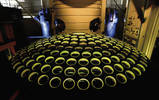
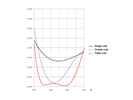
Chromatic Aberration
Chromatic Aberration is an image defect, reducing the sharpness of an image and originating from the unequal refraction of different light wave lengths. The aberration originates particularly in the edges of an image in the form of color fringes.
There are two types of chromatic aberration: longitudinal (typical at long focal lengths) and lateral (typical at short focal lengths).
LD (Low dispersion) glass is used to minimize this mistake. Particularly the photosensitive sensors of digital SLR cameras are sensitive for chromatic aberration; hence, its minimization is especially important in Di and Di II lenses.
The diagram below (diagram 01) shows the difference in chromatic aberration between optical glass and LD glass elements
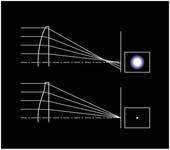
Coma
Coma is an aberration resulting from beams of light which lie beyond the optical axis. The beams of light pass through an off-axis point causing the lens to focus at different points. The picture points are scattered and appear as a comet-shaped blur.
With imperfect optical systems this grouping occurs asymmetrically. Instead of a sharp airy disk, a picture point with a tail directed toward the edge of the optics occurs. This appearance can be diminished by fading out the edges of the rays.
Depth of Field
The depth of field is the range of acceptable sharpness in which a subject is rendered in focus. The depth of field depends on 4 factors: the focal length, the aperture, the focus distance, and the size of the image sensor. The rule of thumb is: The longer the focal length and the wider the aperture, the less the depth of field.
Unfortunately, the question regarding the depth of field in lenses used together with digital cameras cannot be answered precisely. In general, in contrast to 35 mm film photography, digital photography is influenced by the geometrical nature of the sensor. Nevertheless, in general the depth of field increases with APS-C format sensors in contrast to film, where it remains constant and roughly the same as with full-format sensors. In this case, there is no difference between Di and Di II lenses.
Unfortunately, we cannot make exact depth of field tables available, because we would have to test every lens with every available sensor on the market.
Di
Digitally Integrated Design – A Generation of lenses designed for optimized use with digital SLR cameras
(APS-C format and full-frame) by means of superior designs and multi-coating techniques. The same outstanding performance is also achieved with conventional cameras.
Di II
Di II lenses are constructed for the exclusive use on digital SLR cameras with smaller-size imagers
(not bigger than 16 x 24 mm) and featuring optical systems optimized to meet the performance characteristics of digital SLR cameras including:
- High resolution
- Minimization of peripheral light fall-off
- Minimization of scattered light behavior
- Minimization of chromatic aberration.
One example is the application of highly effective multi-coatings on lens and cemented surfaces to eliminate ghosting and flare, which is otherwise particularly noticeable with digital cameras.
At the same time vignetting was minimized, so that digital images are steadily illuminated from the center to the corners. Di II lenses provide ideal focal lengths to cover the range desired by digital photographers and delivering high definition, high contrast-digital images.
Di III
Di III (Digitally integrated design): A designation Tamron gives to lenses engineered specifically for mirrorless interchangeable-lens cameras with no internal mirror box or pentaprism, adopting an optical design that matches the characteristics of the digital camera.
* The lens cannot be used with digital SLR cameras with a built-in mirror box or with conventional SLR cameras.
Distortion
Distortion is a form of aberration in which an image defect occurs which does not occur true-to-scale.
If the enlargement increases towards the edges of an image field, a square is captured in a cushion-shaped form.
The opposite way is called barrel distortion.
The distortion can be compensated with the help of aspherical lens elements.
eBAND (Extended Bandwidth & Angular-Dependency) Coating
The eBAND coating consists of a wafer-thin nanostructure (1 nm = 1/1,000,000 mm) with an extremely low refractive index. In combination with the underlying multi-coating, an outstanding anti-reflection effect is achieved.
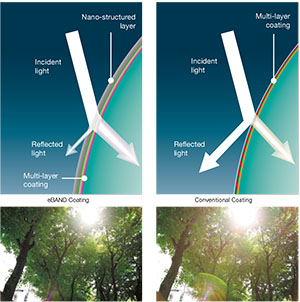
F
Field Curvature
(The edges of images bend on the “focal plane”) – The field of curvature is blurred because the image is generated on an arched surface. The cause for this is astigmatism. Axis distant rays are illustrated closer than rays close to the axis. As a result, two so-called image shells originate, and the image becomes blurred at the edges. Astigmatism is minimized in Tamron lenses through the use of aspherical lens elements and the skillful arrangement and combination of glass elements and their deflection properties as well as an optimized aperture.
Film Plane
A film plane is the area inside a camera where the film or digital sensor is positioned during exposure, and the focused image is reproduced on the light-sensitive material.
Filter Effect Control
With the application of polarization filters together with attached lens hoods, the polarization filter can only be turned with difficulty. Tamron has developed a feature called Filter Effect Control where the polarization filter is rotated with the rotation of the lens hood by means of a ring behind the lens hood.
Fixed Focal Length
A fixed focal length lens is a lens whose focal length cannot be adjusted as with a zoom lens.
In comparison to a zoom a fixed focal length lens is simpler and less expensive to develop and produce. Therefore, fixed focal length lenses generally have a better resolution property, better image quality and a higher luminosity.
Flare
Light originating from reflections within a lens is called scattered or stray light. This non-intended light within the optical system reduces the image contrast and results in weak colors. This is particularly a problem with digital cameras, because of the very high reflecting property of image sensors.
Different technologies are combined in lens design to decrease undesirable scattered light:
- Tamron employed new BBAR (Broad-Band Anti-Reflection) multi-layer coatings on all Di and Di II lenses. This advanced coating was optimized for the special requirements of digital SLRs. In addition, Tamron employs internal surface coatings (coatings on cemented surfaces of lens elements) for sharpness, high color reproduction performance and superior color balance.
- Parts of the lens mount which lie in the beam path have as insofar as possible a matte black finish.
- Lens hoods reduce the emergence of scattered light, by avoiding the lateral incidence of light in the optic.
Flex Zoom Lock Mechanism
This mechanism quickly locks or unlocks the zoom at any position simply by sliding the zoom ring forward. Photographers can shoot from any angle without the zoom extending unintentionally.
Fluorine Coating
Fluorine Coating was developed for optical systems in industrial production. It provides long-term protection to the front lens against oil and water. Any soiling won’t stick to the surface – you will be able to wipe it away easily.
Focal Length
When parallel light rays enter the lens parallel to the optical axis (= infinity setting of the lens), the outgoing light meets at the focal point. The focal length is the distance between this focus point and the principal plane. The focal length is included in the lens name and is specified in millimeters (mm).
Full Format
The dimensions of image sensors of full format cameras approximately correspond to the
35 mm film picture format of analogue SLR cameras. Our Di series lenses are especially designed to meet the higher demands of digital SLR cameras.
GM (Glass Molded Aspherical) Lens Elements
GM and XGM lens elements are capable of efficiently correcting aberrations in the angle of view that changes significantly with an ultra-wide-angle zoom lens. It has an especially significant impact on minimizing distortion and enhancing the sharpness of the image at its periphery. Furthermore, the molded-glass manufacturing method allows the fabrication of a wider range of lens shapes than the composite aspherical lens method. Moreover, XGM also effectively controls aberrations and reduces total lens size.
HID – Glass Element
The HID glass element minimizes chromatic aberration on the axis and in the image corners, one of the biggest obstacles in high optical quality.
Hybrid Aspherical
Hybrid aspherical elements are optical glass elements on which special plastics are compounded to give the element an aspherical form.
Image Noise
A signal can be influenced by undesirable disturbances (electric fields, light reflections originating from the incidence of light on a photosensitive picture sensor etc.). The signal-to-noise ratio (often abbreviated SNR or S/N) quantifies how much a signal has been corrupted by noise. Image noise is particularly an issue under low-light conditions and with longer shutter speeds.
Image Plane
The image plane is the area within a camera where the subject is captured as a sharp image. With analogue cameras the image plane is equal to the film plane, with digital cameras it is equal to the image sensor.
Image Sensor
In digital photography images are stored on a digital storage medium using an electronic image converter
(picture sensor). There are two types: CMOS (Complementary Metal Oxide Semiconductor) chip sensors which use less electricity, are quick and generate little heat and CCD (Charge Coupled Device) chips which uses more energy, but however delivers a better image quality.
Integrated Focus Cam
This is a special Tamron development. The Integrated Focus Cam positions the lens elements of the respective lens precisely in the right position (= Internal Focusing System) and guarantees exact and quick sharpness in every situation.
Internal Focus
Lenses of customary design have a front lens group which shifts when focusing. Internal focus lenses reach the sharp position by shifting (an) inner lens element(s). Here Tamron has developed the so-called Integrated Focus Cam which allows quick and exact focusing. Moreover, the MFD can also be reduced with the internal focusing, as well as image defects like vignetting. Another advantage is the stationary focus-ring regardless of the zoom position. The front element of the lens also does not turn which is important when using filters which are dependent on direction (e.g., polarization filters).
Lateral Chromatic Aberration
With this aberration different sized pictures originate for different wavelengths of light. This results in color hemlines in the image border.
Glass has the characteristic to break the different wavelengths of light to a different extent. Short wavelengths are more strongly refracted than long wavelengths. This characteristic is called dispersion and leads to undesirable side-effects such as lateral chromatic aberration. In the construction of lenses, emphasis is placed on keeping the dispersion of the overall system very low.
Tamron uses LD (Low dispersion) and AD (Anomalous dispersion) elements to avoid lateral chromatic aberration. These are glass elements which either have low dispersion properties or anomalous dispersion properties for certain wavelengths.
The graphic down below (graphic 01) clearly shows the concept.
Normal optical glass has a relatively high color dispersion index, so that it comes to color hemlines in the image border.
With Tamron LD glass the dispersion is substantially lower, so that color hemlines are minimized in the edges.
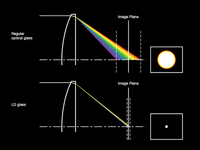
Lens Hood
The lens hood is an important accessory in photography which prevents unwanted light from striking the lens and causing image flare.
The form of the lens hood depends on the angle of view of the lens and on the diameter of the front of the lens. A lens with a narrow angle of view needs a longer lens hood than a lens with a wider angle of view. (See example below).
If the front lens does not rotate while focusing or zooming (IF Lenses), the lens hood can be built a little longer. Because, however, vignetting would first appear in the corners, these are left out. This is how the flower-shaped hood got its form. The advantage of this construction, which is used with many Tamron lenses is the improved protection against stray-light at longer focal lengths.
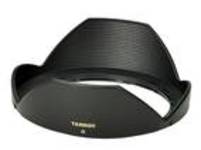

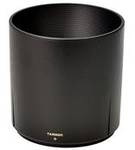
Longitudinal Chromatic Aberration
With longitudinal chromatic aberration the focal point position on the optical axis varies according to the wavelength. This leads to blurred picture points and poor contrast.
Glass has the characteristic to break the different wavelengths of light to a different extent. Short wavelengths are more strongly refracted than long wavelengths. This characteristic is called dispersion and leads to undesirable side-effects, such as longitudinal chromatic aberration. In the construction of lenses, emphasis is placed on keeping the dispersion of the overall system very low.
Tamron uses LD (Low dispersion) and AD (Anomalous dispersion) elements to avoid longitudinal chromatic aberration. These are glass elements which either have low dispersion properties or anomalous dispersion properties for certain wavelengths.
The diagrams down below (diagrams 01) underline the correlation: the first diagram shows the longitudinal chromatic aberration of normal glass. Only the middle wavelengths focus on the image plane. The second diagram clearly shows the reduction of this aberration through the application of LD glass.

Low Dispersion
LD elements are produced of special glass materials which possess an extremely low color dispersion index (a unit which measures the ability of a glass to separate a beam of light in its spectral colors). LD elements compensate for chromatic aberration, which is particularly a problem with telephoto lenses. Chromatic aberration is a form of optical noise which reduces the sharpness and the brilliance of an image.
M
Macro Photography
Macro photography is the reproduction of small objects from a magnification ratio of approximately 1:4 up to about 5:1 (at which point microphotography begins).
Magnification Ratio
A magnification ratio is expressed in 1:x, which is a ratio of the actual size of a subject, “1”, to the size of the subject image reproduced on the film plane, “1 / x”. Therefore, the larger the x value becomes, the smaller the reproduced image on the film or sensor plane becomes. For example, an image of a coin reproduced on film or a sensor will be rendered the same size as the actual coin is 1:1 macro, while the same image reproduced at 1 / 2 of the original size is 1:2 macro. The macro ratio is also referred to as magnification ratio, and the maximum ratio of a lens’ reproduction capability is designated as “maximum magnification ratio”.



Maximum Aperture
The luminosity is defined by the maximum effective diaphragm opening divided by the focal length of a lens.
Lenses with wide apertures are especially required under unfavorable lighting conditions (interiors without flash, animal photography in the dusk etc.). In addition, fast lenses offer a wider scope of creative potential. Because the size of the diaphragm opening determines the depth of field, conscious and pleasantly blurred backgrounds can be generated with big diaphragm openings, creating dramatic effects by softening surrounding details so the subject seems to “pop” off the background. As a rule, stopped-down fast lenses deliver better results than slower lenses at the same aperture setting.
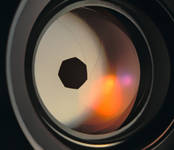
MOD (Minimum Object Distance) also referred to as MFD (Minimum Focus Distance)
The minimum object distance is the distance between the object and the film plane or the image sensor of the camera at which a lens still illustrates sharply. The minimum focusing distance together with the focal length determines the magnification ratio.
Moisture-Resistant Construction
For greater protection when shooting outdoors, leak-resistant seals throughout the lens barrel help protect your equipment.
Optical Axis
The optical axis is an imaginary line through the center of curvature of a lens. (Simply: the center of a lens).
OSD (Optimized Silent Drive)
OSD module allows silent focusing. This makes the lens ideal for situations in which absolute silence is needed during photography. The AF also reacts very quickly and focuses precisely.
Polarizing Filter
There are two types of polarizing filters: linear and circular. Linear polarizing filters are made of mechanically stretched plastics with oriented rod-shaped molecules which are stained with a dye. For lenses there are glass-mounted varieties. For lighting purposes large-sized foils are also available. The filters are used to convert unpolarized light into polarized light. The exposure factor amounts to about 2 – 3. Circular polarization filters are used together with camera systems whose exposure measurement works together with a mirror. This can result in an inaccurate measurement because the measuring light can be polarized with the deflection. Moreover, circular polarizing filters are necessary for autofocus cameras because linear polarizing filters negatively affect the autofocus function, as they block out light from certain angles which is intended to reach the AF sensor. The effect of a polarizing filter is best demonstrated with a shining water surface. The polarizing filter causes a strong decrease in reflections at a certain position. Moreover, polarizing filters strengthen the saturation of colors of shining objects. For example, the blue color of the sky becomes very intense, because annoying scattered light from certain angles is eliminated. This is particularly true for slide photography.
Principal Plane
With optical systems the beams of light which come from infinity are broken to a certain focus. The imaginary plane where this happens is called the principal plane. The principal plane does not necessarily lie within the lens or the optical system.
q
Quad-Cam
The Quad-Cam zoom mechanism is a zoom lens existing of four lens barrels. It is this special Tamron construction which makes the compactness of the 28 – 300 mm possible.
Resolution
In photography resolution or resolution property refers to the ability of a lens to be able to return certain small detail structures. The resolution is measured in lines per millimeter and is dependent on the position (for physical reasons the resolution is a little worse at the image edges than in the middle of an image). Tamron lenses reach an optimal resolution property over the entire image field due to their construction by means of modern computer design.
RXD (Rapid eXtra-silent stepping Drive) Motor
RXD is a stepping motor with a drive element that precisely controls the angle of rotation. A sensor continuously determines the lens’s current focus setting, achieving quick and precise focusing that also allows videographers to keep moving objects in focus continually. All the while, the AF works so quietly that there is no interference in the video from focusing noise.
S
Shutter
In photography a shutter is a light-tight, mechanically movable element which lies within a camera in the optical path in front of the image plane. During the exposure time this element is opened for the duration corresponding to the preset shutter speed, in which the light coming from the lens hits the image plane. After exposure has occurred the shutter closes and protects the photosensitive layer of the film material or the digital image sensor against the unintentional incidence of light up to the next shooting.
Tap-In Console
Photographers can use the TAP-in Console to configure selected TAMRON lenses for their own needs. This means, for example, that you can update the firmware on your lens using your own computer and configure it in other ways that were previously only possible on-location via TAMRON services. The parameters that are individually configurable include (depending on the lens): Focus adjustment, setting the focus limiter, optimization of the manual focus function and calibration of the VC image stabilization.
Teleconverter
Teleconverters are additional devices used between lens and camera to increase the focal length of the mounted lens. The number stated in the name typically 2x or 1.4x represents the factor by which the focal length of the mounted lens is increased, e.g., a 2-fold teleconverter doubles the focal length of the lens. Teleconverters are often an inexpensive alternative to an additional lens. The disadvantage however is that the luminosity of the mounted lens decreases in the same relation to the increase in focal length. Teleconverters are designed to be used only with certain lenses. The use of teleconverters is not recommended with long focal length lenses, wide-angle lenses and so-called super zooms, as the image notably decreases.
Tele-zoom
Tele-zooms are lenses with a variable focal length starting from an angle of view of approximately 20°. This lens class is suited for capturing distant motives up close, e.g., sports, animals, or theatrical photography. But they are also classically used for portraits. With this lens class the frame can be changed with a shift in the focal length (zoom).
USD (Ultrasonic Silent Drive)
Tamron’s USD works with high-frequency ultrasonic vibrations which are produced by a ring called a ‘stator’. Energy from the vibrations is used to rotate an attached metallic ring known as a ‘rotor’. Piezoelectric ceramic, an element that produces ultrasonic vibrations when voltage of a specific frequency is applied is arranged in a ring formation on the stator. This electrode configuration of piezoelectric ceramic causes two ultrasonic vibrations to occur in the stator. By effectively combining these two ultrasonic vibrations, it is possible to convert the energy from the vibrations that produced simple motion into energy known as ‘deflective traveling waves’, which then moves around the circumference (rotation direction) of the ring. With the USD, the friction between these deflective traveling waves created on the metallic surface of the stator and the surface of the rotor produce force, causing the rotor to rotate. The focusing ring of the lens, which is linked to the rotor, is thus moved, creating a fast and smooth auto-focus drive.

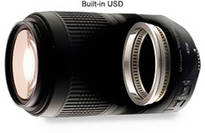

Vibration Compensation
The VC (Vibration Compensation) mechanism is a Tamron development which ensures an effective compensation for camera vibrations. Especially hand-held, low-light and tele photography that is susceptible to camera shake and consequent blurred results, due to the required longer shutter speeds. Under these photographic conditions the VC mechanism can unfold to its full efficiency.
The construction principle
The VC mechanism includes a VC lens element which moves parallel to the image plane merely via electronic control (See illustration 1). The driving coil unit includes a position detector which assesses the respective position of the VC element and reports to the control unit. The VC element has three magnets which are driven by corresponding driving coils. In the control unit, two gyro sensors are installed, which grasp the horizontal and vertical vibrations and report them to the microprocessor. The VC element is free-floating (two degrees of freedom, and parallel to the image plane) and can therefore compensate for vibrations in all directions.
If vibrations occur as shown in illustration 2, a blurred picture originates on the image plane, proportionate to the rotation angle of the vibrations. The gyro sensors grasp the respective vibrations and report the data to the microprocessor. This in turn calculates the rotation angle and passes on the respective control commands to the driving unit which in turn shifts the VC element to counter the direction of the vibration. (The system works at a speed of 4 kHz, meaning that a correction is performed 4000 times a second).
Extremely short response times of the driving unit
The VC driving unit uses a three-coil system developed by Tamron. The VC element is magnetically held in position, stored on three steel ball bearings. Since the VC compensating lens element is held in place solely by contact with these bearings, smooth, virtually frictionless movement is assured, providing stabilized viewfinder images and excellent tracking performance characteristic of VC lenses. The result is an extremely short response time on grasped vibrations. Moreover, since the VC lens element moves parallel to the image plane via electronic control alone, the mechanical structure is simplified, and the lens is more compact. This serves the compact design concepts which distinguish Tamron lenses.
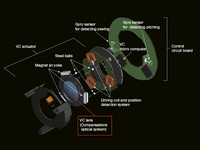
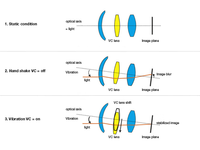
Vignetting
There are two types of vignetting: natural and artificial. Artificial vignetting is caused by components, such as the iris and fixtures among other things which lie in the optical path. These are to be dimensioned accordingly in the construction of the lens.
With natural vignetting the intensity of illumination decreases towards the image edges.
Generally valid is: E (a) = cos4*a whereas a = angle of view and E = intensity of illumination.
VXD (Voice-coil eXtreme-torque Drive)
VXD is a linear motor focus mechanism for stunningly fast and accurate auto-focusing. Focus tracking has also been vastly improved during sports and racing photography. This ensures that those powerful moments are never missed, whether shooting still photos or video. With the excellent quietness that is characteristic of linear motor systems, the AF is ideal for shooting in low-noise environments.
Wide-Angle
In photography, a wide-angle lens is understood to be a lens with an angle of view greater than 55°. In order to cover more subject area, a wide-angle lens illustrates smaller. A wide-angle reduces the image scale.
XLD (Extra Low Dispersion)
Extra Low Dispersion (XLD) lens elements are made from specialized ultra-high-grade glass that has lower dispersive properties than standard LD lenses (where refraction causes the dispersion of white light into spectral hues). The dispersive properties of the XLD lens are at a level similar to fluorite, and in combination with LD elements make for an optimal optical design that delivers best in class resolution with advanced axial chromatic and magnification aberration correction – major inhibitors of image quality enhancement.
In combination with LD elements, XLD elements are used to achieve sophisticated lenses that deliver the highest possible contrast, the finest detail, and superior imaging performance throughout the entire zoom range.
XR
Extra Refractive Index Glass
XR Glass is a special type of glass with a high index of refraction. XR Glass allows for a more compact lens construction in terms of length and diameter, as compared to a lens made of customary glass with the same luminosity and optical performance. The focal length of an XR glass element is shorter than that of customary glass, so that the barrel of an XR lens can be shortened. As a result of the shortening of the barrel, the actual opening consequently becomes bigger, and the lens diameter can also be reduced (see picture). The luminosity of the lens remains the same in spite of the smaller diameter.
Fig.: Looking through two barrels of different length and the same diameter, the apparent opening of the shorter barrel is bigger. Therefore, the diameter of the shorter barrel (with a constant apparent diameter) can be reduced.
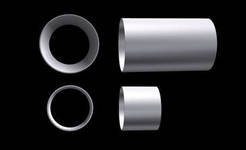
Zoom
A lens in which you can adjust the focal length is called a zoom or a zoom lens. The advantage of a zoom lens is that the frame can be varied without changing your location as the photographer. Zoom lenses have become indispensable. Tamron has achieved an image performance in its zoom lenses which comes close to those of fixed focal length lenses through its ongoing efforts in research and development (e.g., LD – AD – as well as aspherical elements).
Zoom Lock
The zoom lock (ZL) mechanism is an extremely useful and much appreciated mechanical concept developed by TAMRON. This feature prevents undesired extension (creep) of the lens barrel when carrying the camera/lens unit on a neck strap. This enhances responsiveness in the field and helps protect the lens.
